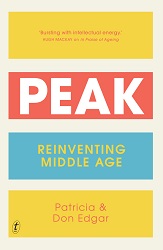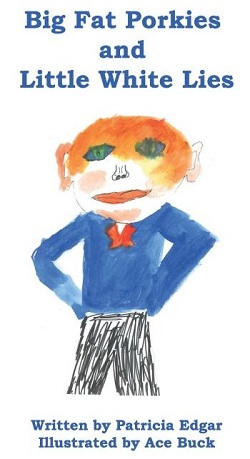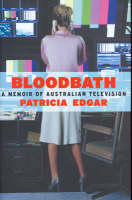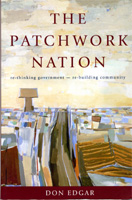PART B – Regulatory and funding issues
A whole-of-government perspective
Discussion
This paper has been prepared at a time of widespread change within the Australian film and television industry. The Australian Communication and Media Authority (ACMA) is undertaking a review of its Children's Television Standards. It has recently launched a website to help people participate in and understand digital media services – www.acma.gov.au/medialiteracy.
The Australian Broadcasting Corporation and the Special Broadcasting Service are also undergoing reviews, taking into account convergence and digitization. The Australian film Finance Corporation, the major funding bank for the industry has been merged into a new body, Screen Australia.
The Australian Government’s broadband and digital plans, the role of ACMA and the reviews of the ABC and SBS are as central to the education revolution as are the government’s plans for reform of the education system for early childhood.
It is suggested that the importance of media in the education of children has not been well recognised because there has not been a whole-of-government perspective linking education policy and communication policy, although now the need for computers and for fast broadband connections has been accepted.
Health policies for children have not been seen as a core aspect of early childhood education. Child care funding has been premised on helping mothers in employment, not seen as an essential domain of early childhood development and learning.
Some states, such as Victoria, have appointed a Minister for Children to attempt better cross-departmental coordination and other states have a Children’s Commissioner. Such developments need to be carried through nationally with the appointment of a federal Children’s Media Commissioner who would advise governments and liaise with industry, education and community groups in the best interests of children and oversee the conduct of research on how the media affect children’s development and learning.
Findings
- Communication and technology policies should be seen as integral to the nation’s education policy.
- The Early Years Learning and Development Framework (ELDF) should have a clear focus on informal learning through media and technology.
- Media education should be expanded beyond a narrow focus on media literacy skills to include the content and learning potential of all forms of the new digital media.
- Rather than taking a narrow focus on students’ school readiness, or their later productivity the ELDF should focus on the sort of citizens we need our children to become.
- The government should appoint a Children’s Media Commissioner to develop a framework for all government activity associated with children’s education, health and welfare with media at their core.
Updated regulations for the digital age
Discussion
Commercial television
For thirty years, Australia has had a system requiring Children’s Television Standards (CTS) which are currently under review. The overall goal of the CTS is ‘to promote Australia’s identity, character and cultural diversity’, by requiring programs specifically designed for Australian children and protecting them from ‘harmful effects’. In brief, the CTS require that commercial TV networks broadcast annually 260 hours of children’s programs (C) and 130 hours of pre-school programs (P). Half of these must be first-release Australian content; all P programs must be Australian. Licensees must broadcast at least 96 hours of first-release Australian C drama over a three-year period, plus eight hours of repeat Australian drama.
Given the enormous number of hours Australian children are watching (averaging over 5 hours a day), not much of it is ACMA-approved C or P material. Even the programs classified as P or C leave much to be desired.
ABC and SBS
In October 2008 the Australian Government called for submissions to review the future roles of the Australian Broadcasting Corporation and the Special Broadcasting Service. (ABC and SBS: Towards a digital future. Discussion paper, www.dbcde.gov.au/abcsbsreview)
The government is seeking to clarify the vision and direction of the ABC and SBS as creative and responsible public broadcasters in the era of convergence and digitisation. This review will include an examination of children's programming and the discussion paper expects ‘the national broadcasters could play an enhanced role in children's programming’. At the Australia 2020 Summit the final report stated, ‘the ABC would have a specific education role in classrooms and across all industry sectors. This should be supplemented by the ABC having a separate children's channel.’
Programming for children
In October, 2008, Australian P classified programs broadcast on the commercial networks included:
Commercial networks |
ABC |
|
|
Other programs classified and approved by ACMA as fulfilling their criteria for programming suitable for pre-schoolers, but not screened in October, include:
|
|
The Australian pre-school programs on commercial networks and the ABC vary in quality and in the effort made to produce them, but generally speaking their education curriculum is very thin and the content is wearily formulaic, with on-screen adult hosts talking down to children and behaving like children.
Production values are basic; the scripts lack humour, originality and imagination. Across the shows the content is remarkably similar. The hosts sing songs and demonstrate crafts such as walking barefoot in paint or constructing a clock. The stories are read straight from books and not read very well. Any adult able to invest 30 minutes to be with a child or group of children would be better off reading a story themselves or guiding play. These shows do little to enrich, stimulate and excite the imagination of children as television is capable of doing.
An ACMA classification lasts for five years and the pattern is that once a program is approved, it remains in production. The other important consideration is that P classified programming represents only one half hour each week day of programming for children on a commercial television channel. So for most of the time on commercial TV, the pre-schooler, the heaviest viewer in the family, is exposed to programming that was not made specifically for them and the chances of them fully understanding what they are viewing are negligible.
With ACMA’s review of the commercial children's television standards and the government's review of the ABC and SBS there is an opportunity to change the direction for children's media, implementing reforms that will form part of the educational revolution. It is time the objectives for children’s media and their education were brought together to enhance childhood learning.
Australia has a system of regulation and subsidy to encourage the production of new television programs for children. The commercial networks – Nine, Seven and Ten – are regulated by the Australian Communication and Media Authority (ACMA). ACMA administers Children’s Program Standards (CTS), Australian Content Standards and sets quotas.
In prescribing CTS, the legislation explicitly identifies several areas to be addressed in relation to children. These are:
- the times at which children's programming should be broadcast
- how programs televised during children's viewing time should be classified
- the requirement for Australian programming for children.
The CTS was devised 30 years ago and have been passed on from the Australian Broadcasting Tribunal to the Australian Broadcasting Authority to ACMA. The standards were drafted for a different era and were reviewed with a view to ensuring they remain effective within a significantly changed media landscape.
A draft paper released for comment (ACMA media release 105/2008 – 27 August) has proposed few changes and deferred an examination of the future digital environment and its impact on the standards. ACMA is flagging an idea that classification of programs be undertaken by ‘a person or body appointed by ACMA’. The idea could have merit if the person or body were to be associated with the ELDF, with powers to review programs currently classified.
The relevance of the quotas and the nature of programming currently being accepted under the CTS, needs an in-depth review. The history of Australian children’s television policy demonstrates:
- that while regulation (the CTS) is a pre-condition of the development of quality children’s programs within the commercial broadcasting sector, regulation alone is not the complete answer – regulations need continual monitoring to ensure objectives are met as circumstances change
- quality will not be met by the free market – Allan Fels, then Chairman of the Australian Competition and Consumer Commission made the case for cultural protection of children's television in the context of competition policy at the Australian Children's Television Foundation (ACTF) 20th Anniversary Symposium in 2002:
‘It would seem that the arguments that relate to market failure with regard to Australian programming in general apply even more for children's programming (there is also a further commitment that to a degree children's television can be seen in a broad sense as part of the nation's education policy). It seems reasonable to assume that specific programs targeted to children, especially expensive to produce children's drama, will not be produced in the absence of regulatory requirements... The combination of minority audiences, advertising restrictions and relatively high cost make children's programming commercially doubtful for the free-to-air broadcasters. Consequently it is no surprise that these broadcasters will try to minimise programming costs and this is likely to be reflected in the quality of the programs.’
- the best children’s media programs will not necessarily pay their way – just as we need to subsidise schools, we need to subsidise the programs that will support the development and enlightenment of children.
It is time to reform the 30-year-old children's program standards under which the commercial broadcasters operate and to ensure that the ABC’s programming comprehensively meets children’s social and educational development needs. These objectives will be best achieved by bringing together media and education policies under a coordinated federal government initiative.
Findings
- ACMA should revise the Children’s Television Standards (CTS) in light of the ELDF and consistent with sound principles of early childhood development and learning. In particular, the objectives of the children’s quotas for commercial TV networks should be linked to the National Curriculum Framework.
- In order to accomplish 6, ACMA should establish a new Children’s Media Standards Committee. Its chairperson should be the government-appointed Children’s Media Commissioner (Finding 5). The Committee would oversee and approve new children’s television programs, computer games and internet provisions for children. The focus should be on quality and value to the healthy social and physical development of children and building on the learning potential of the new media for children’s own creativity and control.
- All videos, games and new media products marketed to parents for use with their children as Educational Learning Aids (ELAs) should be rated by ACMA’s Children’s Media Standards Committee.
- Clear guidelines should be developed by ACMA to help parents monitor and use to advantage the viewing and other media activities of their children.
A new interactive educational service for children
Discussion
The ABC and SBS are independent statutory authorities established by legislation. Their roles and functions are set out in their charters.
The principal function of SBS is to provide multilingual and multicultural services that reflect Australia's multicultural society. SBS has produced few children's programs and has no regular children's television service.
The ABC’s Charter states that the ABC should ‘provide innovative and comprehensive broadcasting services of a high standard that contribute to a sense of national identity and inform, entertain and reflect the cultural diversity of the Australian community’. It is also required to provide ‘programs of an educational nature’.
The ABC is not subject to any classification of its children’s programs by an outside authority such as ACMA. Unlike the commercial networks, which produce no specialised children's programming beyond their quota requirements, children’s programs fill a large proportion of the ABC’s daytime schedule. On any given week-day, between five and six hours of programming is directed at the under eight audience on ABC1 alone – from 6-10.15 am and 3-5.00 pm. Much of this programming is commercially driven, supported by merchandise that is promoted on air and sold in ABC shops.
ABC 2 claimed recently that its children's channel was reaching more children than any of the cable television channels. (Mitchell, 2008) A total of 26% of Australian homes had subscription television by 2006. (ACMA) Foxtel now reaches 30% of Australian homes. These services include the Disney, Nickelodeon, Fox Children and Cartoon Networkchannels. The ABC has proposed a new ABC digital channel which would carry 50% Australian content and no commercials (if promotions for merchandise and ABC Enterprises are disregarded).
The United Kingdom’s regulator, Ofcom has studied the output of Britain’s digital children's channels and reported that they show many repeat programs, predominantly animated and from the United States, while first-release indigenous programs by British producers amount to 1% of transmission time. Australia and the ABC are not equipped to do better than Britain and the BBC in meeting Australian children's media needs. The concern is that the ABC’s digital channel will transmit repeated programming over many hours. Parents and children deserve a service relevant to their contemporary needs, not more of the same.
A recent call for new programming, KIds360, by Film Victoria, the ABC and the ACTF indicates they recognise that initiatives are needed. They are seeking a pilot for ‘a live-action non-drama program that will excite, entertain and inspire children across Australia’. Producers are encouraged to create concepts for young people similar to programs created for adults in prime time that are currently being produced in Australia – ‘The sky is the limit,’ producers are told. ‘Think Spicks and Specs, Thank God You're Here and Rove for 10 to 14 year olds.’
The problem is that the brief calls for form over function. There is nothing to guide applicants about what the program should do for children other than ‘engage’ and ‘interact with content’. Emulating adult formats is not an appropriate starting point for the producers of children’s programs. There is a need to spell out the content and quality objectives of media designed for children to ensure their best interests are served in health, education and social development, as well as entertainment.
Alongside well-developed scripts and creative development teams, there needs to be an ethical agenda to challenge the pursuit of consumerism and personal gratification which in many programs triumphs over the collective good. Media education is a mutual obligation that must be shared by governments, parents, the community and traditional and digital media because markets alone cannot be relied upon.
In short:
- programs must have educational goals, not goals to sell soft toys or designer clothes
- programs must be trustworthy and put the interests of children as citizens above the interests of profit
- children must be treated as active participants in the production and consumption of their media content
- to be effective children's media must take risks, push boundaries, explore new possibilities, raise new questions, challenge the audience to think and act effectively
- children’s media must be multi-platform
- media producers must work in partnership with educators.
Some of the ingredients of a new service could include:
- a virtual world – developed with sound educational principles – on the scale of a Club Penguin and within a distinctly Australian setting
- an interactive games platform with games developed by experienced gamers working with educators
- a YouTube equivalent where children post and exchange their own productions
- a library of the best programs available for children to download and watch at their convenience
- Australian drama series of high quality – durable stories drawn from Australian culture for all child age groups
- A major early childhood programming initiative to be developed as an integrated resource alongside the new national early childhood curriculum. (See Recommendation 12)
Finding
- A new children’s media service for three- to nine-year olds should be established, which could make a powerful contribution to the formal and informal education of Australian children. The best creative brains in the world of media and technology should be recruited to design and produce quality products specifically aimed at reinforcing the learning and development goals of the ELDF.
Funding an interactive educational service
Discussion
In its draft paper for a review of the CTS, ACMA put forward a contentious idea. A tradable obligations scheme would allow a network to take on programming obligations of another network to increase the amount of children's programs across a greater number of hours. In a variant of this idea, commercial networks could forgo their children’s quota obligations but instead pay a tax that would go to a children’s production fund to help pay for the proposed new service for children.
The ABC could be given responsibility for this new service as an outcome of the current review, with strict conditions for funding that requires the ABC to meet the educational programming needs of the ELDF and produce programs to fit with the proposed media literacy program. The ABC should be required to lead and innovate. It should not be funded to provide a digital service that will recycle dated repeat programming nor should it emulate what the commercial networks already do.
Screen Australia, which invests in children's drama programs, should be given a clear brief about the programming objectives for such a new service. Programs funded should not be required to be simply market-driven.
It would make good economic and educational sense to tie these policy initiatives together to enable the government to invest in a service that meets educational and cultural children’s programming objectives. With the broadcasting and regulatory reviews and the development of an early childhood learning framework underway, the timing is right.
Finding
- The ABC and SBS should be funded to give higher priority to children’s programming and be exempt from marketing such programs and associated products to raise revenue.
A new television program for early learners
Discussion
In 1989, more than 100 experts from differing fields with an interest in children developed a major initiative for early childhood learning. There were mathematicians, philosophers, scientists, musicians, writers, illustrators, poets, psychologists, sociologists, environmentalists, puppeteers and actors. During three week-long workshops, the ACTF devised a curriculum and characters for a new early childhood series called Lift-Off, which would be comprehensive and supported by parents, the community and the schools.
The project blossomed as individuals with different perspectives, knowledge and experience mixed ideas. A program was devised that became an exceptional success with its audience, educators and collaborators – and with the critics. Lift-Off was endorsed by all State Directors of Curriculum and the Curriculum Corporation invested in a comprehensive package of materials to support it in schools.
An outreach program developed and stimulated activities with parents, children’s service-providers and teachers in all states. A total of $17 million was invested in the television series alone. It took four years and the program was an immediate success. The plan was to maintain a weekly slot on the ABC to evolve the project into a comprehensive, national early childhood education program. With television at its core, it would involve parents, schools and the community – it was an experiment for children’s education unlike any in the world.
But with a change of administration at the ABC, Lift-Off was cancelled. Without a broadcast outlet, the project could not be maintained, so a well-developed, comprehensive resource sat on the shelf unseen. An important opportunity to improve the educational opportunities and experience for early childhood was lost.
Australian children need another such project as the basis of their early childhood learning initiative. A national outreach project should be developed alongside a program to bring together parents, youth, elders and children’s services ranging from child care, kindergartens and primary schools to family support services. The ELD Framework has to conceive of early childhood development and learning in terms much wider than professionally-provided services. It needs to build on the wide range of resources, including the power of media and technology that can and do contribute to every child’s potential.
Finding
- The ABC should be funded to develop and transmit a new program designed around the goals of the Early Childhood Curriculum Framework that would be the core of a community based early childhood project.
Research into the impact of new media on children
Discussion
ACMA and Australia’s media literacy fraternity has an important opportunity to develop a new approach and conduct research that is meaningful and of value to the early learning framework. It would address the content issues flagged above, documenting clearly what children learn from watching and participating in the whole range of digital media.
Despite claims that television violence causes aggressive behaviour and emotional disturbance in children, there are greater risk factors, such as family disruption, violence and poverty in the home, lack of friends and poor performance at school. Parental values and the children’s self-esteem mediate what they are allowed to view in the first place and its effect on them. (Edgar, 1977 and Edgar, 2006)
The impact of advertising and the vast market that has emerged to exploit children’s preferences from toddlers to ’tweens and therefore parental purchases is clear. ACMA claims however, that the research does not justify any further controls on food and beverage advertising which targets children. This is despite what is known about increased child obesity, the consumption of junk foods, the sexualisation of children and growing anxiety levels in young people (Stanley, 2006; ACMA Media Release 105/2008, 27 August)
It is not easy to research media outcomes, especially with young children. It would be helpful to have well-designed observational studies on what sort of adult content is being watched by children in heavy media households. But when a researcher is present, parents are unlikely to leave the TV set turned on all day or watch unsuitable adult programs.
It is also known that parental reports on how much and what children are watching, or how they are using their computers, are unreliable. Young children cannot be given questionnaires or interviewed on what they have learned from their exposure to the media, although qualitative group discussions might be informative.
A more sophisticated multivariate analyses of large data sets such as the LSAC study is needed that compares high and low achieving groups on a variety of learning outcome measures. The aim would be to assess whether controlling for factors such as family income, parent education and home language, the amount and type of media use has had an independent effect on their development.
There are other requirements:
- More systematic research on the impact of advertising on children’s food, beverage, toys and clothing preferences and use, plus how parents react in their purchasing of products for their children – advertisers know which advertisements work so it should not be hard to get better evidence on matters of deep concern to parents and the wider community.
- Observational studies of groups of young children and their reaction to a variety of television programs and video games recorded and analysed – comments, levels of interest, recall of words, actions, images, characters, and carry-over into playing or their demands on parents.
- Experimental studies using specially planned educational programs or segments with developmental goals built in to test the effects on language, cognition, socio-emotional behaviour, interests, curiosity and further exploration.
- Follow-up studies after exposure to such segments, at varying intervals, to see how long the effects last, controlling for whether or not an adult has viewed the program with the child, talked with them about what they have seen, and ‘scaffolded’ the program elements with further learning exercises.
- Controlled observational experiments in child care and preschool settings where teachers use TV programs such as nature documentaries, children’s drama and music or computer games to lead into lessons about wider curriculum goals.
- One-on-one discussions with children about current events, sports, entertainment, nature studies and personalities to identify from where they get their ideas, their sources of information (correct or incorrect) and how they feel about what they know.
- More case studies of the type quoted above by Marc Prensky, showing how young children develop their skills and understanding of computer games, their interpretation of media content and whether parental guidance makes a difference to their media literacy.
- Controlled studies of children in various learning groups, comparing those whose carers or teachers have used television segments and interactive technology to ‘scaffold’ learning to introduce children to information, concepts and techniques from the wider world of media content, with other groups where this has not been part of the learning and teaching techniques used.
- Systematic documentation studies of aspects of children’s media literacy – ranging from simple functional usage skills to understanding of media messages, advertising and persuasion, production techniques, the impact of music and other emotional devices on behaviour, to the creative use by children of new technologies to express their own ideas and imaginative output.
Finding
- Government should fund ACMA and other organisations for a concerted research effort to document the links between children’s media use and their learning and development outcomes, in order to improve the effectiveness of the early learning and development initiatives.
Media literacy for adults
Discussion
Media use is already widespread for all children well before they reach school age. It becomes even more significant as they grow older. Child care centres, preschools and primary schools must all take into account this media experience in their handling of curriculum content. Educators should encourage the use of appropriate media to take advantage of the rapid learning curve from age three.
Parents need to be involved in the selection of games and in playing with their children as described in the Prensky case above. Games for unsupervised solo play should initially consist of simple image and sound exercises focused more on developing symbolism than winning or losing. Vocabulary is also of prime importance since the brain is ready to absorb new words.
Adults need to spend time with children to teach them how to use the internet effectively to communicate, to find information and to be entertained. They need especially to help children develop a framework and strategies for internet use that will ensure their safety and well-being. In order to do this, adults themselves need to:
- know how to locate TV channels, pre-record programs, set up videos and DVDs
- know how to use a computer to use the internet as an effective research tool and sift for accuracy and bias; send emails and photos and download tools to create content; use communication technologies with appropriate ‘netiquette’ and safe practices, including strategies for dealing with inappropriate and unwanted material
- play hand-held and computer-based games
- know who produces various kinds of programs and the purposes behind programming
- know how programs are produced, identify hidden messages and assess commercial messaging
- differentiate reportage from advocacy
- identify creative possibilities
- be active media users, not passive recipients of unsuitable material aimed at the child as a consumer
- participate and interact with children in all media-technology experiences by watching and discussing TV programs and playing computer games
- perceive media technology as powerful learning mechanisms for children with negative and positive potential
- understand that without an ability to use the new technology, children’s learning and development will be seriously disadvantaged impacting on their scholastic capacity and work prospects
- accept that the old days of chalk and talk teaching are gone
- appreciate that children have a new learning power through technology but they have to be taught how to use the computer and other media to their greatest advantage
- undertake teacher training to provide students with support to direct their boundless creativity through new media
- become parental activists, demanding better quality media programs designed specifically for Australian children, protesting about their commercial exploitation, demanding better regulation of all media, including computer games that are designed with educational purposes and consider children’s interests.
Finding
- A systematic program in media literacy and media education should be developed and made available to parents, child carers, pre-school teachers and other adults to increase their awareness of the positive potential for children to learn and develop healthily through the use of media and digital technology.
The digital divide
Discussion
Whether or not parents can see the potential learning value of media exposure, and what is called the digital divide are the main barriers to children’s media use, apart from television which is universal.
Technology puts a lot of pressure on today’s families. It is costly to be connected, to have mobile phones, cable access and the latest iPod. The digital divide is exacerbating inequalities in access to good schooling and other children’s services. Many parents are pulled in two ways by the new technology – they fear its negative impacts: passivity, physical inactivity, pornography and cyber-bullying. But they sense that without adequate exposure and skill acquisition their children will be disadvantaged.
This is the modern version of educational inequality, which has always reflected both parental income and their perceptions of the value of education. The most recent OECD comparisons suggest that the education divide is reopening, with 7.2% of children having fewer than 11 books in the home, 12% of children living in households where income is less than half the national median, and psychological problems rising. Income influences what products families can buy, including access to cable TV and the internet.
In the United States,
“The growing importance of the internet has created a new disparity across class lines in children’s access to skills, social networks and intellectual resources. While children with high household incomes enjoy speedy, pervasive access to technology at home and at school (either private or affluent public school districts), others struggle to compete for intermittent access to slow machines that are outdated and erratic…. Those young children without access to the internet … are considered to be seriously disadvantaged, cut off from opportunities, unskilled for future work, and disconnected from peers.” (Montgomery, 2007, p. 210)
There are no Australian studies that break down children’s media usage by race or ethnicity, but the LSAC data on four-year-olds described above suggest that parental education levels, family income and other factors such as working hours, father absence and number of siblings do have an impact on their viewing patterns and developmental outcomes. As Professor Alan Hayes puts it, ‘While social class differences are not evident in early infancy, by six or seven years of age, developmental outcomes are clearly differentiated by parents’ social position.’ (The Australian, 21 October, 2008)
With the global financial crisis impacting on Australia, that income gap may well become wider and public institutions such as children’s and family support services, child care centres and pre-schools, local libraries and schools will have to become key providers of access to computers, specialist games, and media literacy programs.
Australia is a rapid adopter of any new technology, but there remains a significant digital divide which the government is currently trying to address. The number of dwellings with access to the internet increased from 35% in 2001 to 63% by the 2006 Census. (ABS, 2006)
Nationally, access varies from 66% of households in the major cities to 42% in very remote areas (with just 28% of these remote households on Broadband). The ACT is highest (75%), with South Australia, Tasmania and the Northern Territory lowest (between 28-32%). As well, the top quintile of household incomes has 77% with access compared with only 34% for the lowest quintile household group. Those with post-graduate education are 83% more likely to have access to the internet than those with no post-school qualifications. The unmarried, low-skilled, indigenous and unemployed also have lower access.
An Australian study by the Smith Family found a new digital divide between those who are part of ‘the new participatory creative culture’ and those who are not. That is, inequality is not just reflected in relative access to and possession of media forms but a lack of skills and opportunities for using technology for social inclusion. (Muir, 2004)
If the new interactive, creative technologies do actually encourage a new world of democratic citizenship participation (UNESCO), there can be no doubt that children who lack both the opportunities and skills to make their own informed media-related decisions, or to interact with their peers and express their ideas via the new technology, will lack the cultural competencies and social skills that will be necessary in this newly-emergent digital world.
Children whose parents do not have a computer, or cable TV or a DVD player, or cannot afford monthly internet service bills will be at a serious disadvantage and they need public access to and training in the use of such technologies. Gender plays its traditional role as well, with girls in school often marginalized in computer use, boys averaging a higher daily use and thereby gaining higher computer skills.
Finding
- Governments and education authorities need to provide greater guidance to parents on the educational value of television and digital media and seek ways to increase equality of access to the technology.
References
ABS (2006), Patterns of Internet access in Australia, 8146.0.55.001
ACMA (2007), ‘Media and Communications in Australian Families’, Sydney. www.acma.gov.au/medialiteracy
ACTF (1989), Lift-Off: Early Childhood Program – Philosophy and Objectives, Australian Children’s Television Foundation, Melbourne
American Academy of Pediatrics (2001), ‘Children, adolescents and television. Committee on Public Education, Pediatrics, Vol. 107, No. 2, pp. 423-426
Barr, P. Muentener & A. Garcia, 2007, ‘Age-related changes in deferred imitation from television by 6- to 18-month-olds’, Developmental Science, Vol. 10, Issue 6, pp. 910-921.
Berk, L. & A. Winsler, 1995, Scaffolding children’s learning: Vygotsky and early childhood education, National Association for the Education of Young Children, Washington DC
Bond University for the Interactive Entertainment Association of Australia (October, 2008).
Buckingham, D. (2000), The Making of Citizens: Young People, News and Politics, Routledge, London
Buckingham, D., 2007, The Media Literacy of Children and Young People, A review of the research literature on behalf of Ofcom, Centre for the Study of Children Youth and Media Institute of Education, University of London
M. Buijzen & C. Mens, 2007, ‘Adult mediation of television advertising effects: A comparison of factual, evaluative and combined strategies’, Journal of Children & Media, 1, pp. 177-191
Bushman, B.J. & L.R. Heusman (2001), ‘Effects of televised violence on aggression’. In D.G. Singer & J.L. Singer (eds.), Handbook of Children and the Media, Sage, Thousand Oaks, pp. 223-254
Calvert, S.L., B.L. Strong & L. Gallagher (2005), ‘Control as an engagement feature for young children’s attention to and learning of computer content’, American Behavioral Scientist, 48 (5), pp. 578-589
Cassell, J. (2004), ‘Towards a model of technology and literacy development: Story listening systems’, Journal of Applied Developmental Psychology, 25 (1), pp. 75-105
Chera, P. & C. Wood, 2003, ‘Animated multimedia ‘talking books’ can promote phonological awareness in children beginning to read’, Learning and Instruction, 13, pp. 33-52
Children Now(2007), The Effects of Interactive Media on Preschoolers’ Learning, A Review of the Research and Recommendations for the Future, ChildrenNOW.org
Clements, D.H. (1994), ‘The uniqueness of the computer as a learning tool: Insights from research and practice’, in J.L Wright & D.D. Shade (eds) Young Children: Active Learners in a Technological Age, National Association for the Education of Young Children, Washington DC
Dens, N., P. de Pelsmacker & L. Eagle (2007), ‘Parental attitudes towards advertising to children and restrictive mediation of children’s television viewing in Belgium’, Vol 8, no. 1, pp. 7-18
Edgar, Don (2001), The Patchwork Nation: Re-thinking government, Re-building community, Harper Collins, Sydney
Edgar, Patricia (1977), Children and Screen Violence, University of Queensland Press, St. Lucia
Edgar, Patricia (2006), Bloodbath, a memoir of Australian television, Melbourne University Press
Edgar, D. & P. (2008), The New Child: in search of smarter grown-ups, Wilkinson Publishing, Melbourne
M. Evans Schmidt, 2006, ‘Two-year-olds object retrieval based on television: testing a perceptual account’, Media Psychology, Vol. 9, No. 2, pp. 389-409
Fisch, S.M. (2004), Children’s Learning from Educational Television: Sesame Street and Beyond, Erlbaum, Mahwah, NJ
Foster, K., G. Erickson et al (1994), ‘Computer-administered instruction in phonological awareness: Evaluation of the DaisyQuest program’, The Journal of Research & Development in Education, 27 (2)
Frei, P., V. Su, B. Mikhak & H. Ishii (2000), ‘curlybot: Designing a new class of computational toys’, in T. Turner et al, (eds.) Proceedings of the ACM CHI 2000 Human Factors in Computing Systems Conference, The Hague, Netherlands, pp. 129-136
Gardner, Howard (1983), Frames of Mind: Theories of Multiple Intelligence, Basic Books, New York
Gardner, Howard (2006), Five Minds for the Future, Harvard Business School Press, Boston, MA
Hannon, C., P. Bradwell & C. Tims (2008), Video Republic, Demos, London
Haugland, S.W. & J.L. Wright (1997), Young Children and Technology: A World of Discovery, Allyn & Bacon, Boston
Jenkins, H. (2007), ‘Confronting the challenge of participatory culture: Media education for the 21st Century’, www.projectnml.org
‘Kids360: new children, new screens, new ideas’, Screenhub, 2/10/08.
Labbo, L.D. & M.R. Kuhn (2000), ‘Weaving chains of affect and cognition: A young child’s understanding of CD-ROM talking books’, Journal of Literacy Research, 32 (2), pp. 187-210
Lewin, C. (2000), ‘Exploring the effects of talking books software in UK primary classrooms’, Journal of Research in Reading, 23 (2), pp. 149-157
Luckin, R., D. Connolly, L. Plowman & S. Airey (2003), ‘With a little help from my friends: Children’s interactions with toy technology’, Journal of Computer Assisted Learning, 19 (2), pp. 165-176
McIntyre, Paul (2008), ‘Boom in virtual playgrounds for children’, The Sydney Morning Herald, October 9.
MediaSmart, www.mediasmart.org.uk/about.php
Mitchell, Harold (2008), ‘ABC digital takes lead out of the barrier.’ The Australian, 6 October.
Montgomery, K.C., 2007, Generation Digital, Politics, Commerce and Childhood in the Age of the internet, MIT Press, Cambridge, Mass.
Muir, K. (2004), Connecting communities with CTLCs: From the digital divide to social inclusion, The Smith Family, Sydney
Novak, Jeannie and Luis Levy (2008), Play the Game, The Parent’s Guide to Video Games, Thompson Course Technology, http://www.courseptr.com
Ofcom (UK) (2008), Media Literacy Education Resources, www.ofcom.org.uk/advice/media_literacy/mediaLiteracyEducationResourc/
Penman, Robyn and Sue Turnbull (2007), Media Literacy – Concepts, research & Regulatory Issues, ACMA, Sydney
Power, Emily, 2008, ‘Hey teacher, like, smarten up’, Herald Sun, 16 November 2008).
Prensky, Mark (2006), Don’t bother me mom, I’m learning, Paragon House, St. Paul, Minnesota
Ryokai, K., C. Vauselle & J. Cassell (2003), ‘Virtual peers as partners in storytelling and literacy learning, Journal of Computer Assisted Learning, 19 (2), pp. 195-208
Siraj-Blatchford, J. & I. Siraj-Blatchford (2001), ‘IBM Childrenmart Early Learning Programme – UK Evaluation Report, Phase 1, 200-2001’, London, IBM
SPAA (2008), Screenhub, 12 November. www.screenhub.com.au/
Stanley, Fiona, Sue Richardson & Margot Prior (2005), Children of the Lucky Country, Pan Macmillan, Sydney
Van Scoter, J., D. Ellis & J. Railsback (2001), ‘Technology in early childhood education: finding the balance.’, Northwest Regional Educational Laboratory, Portland OR, http://www.netc.org/earlyconnections/byrequest.pdf
Wartella, Ellen , J. Lee & A. Caplovitz (2002), ‘Children and interactive media: Research compendium update’, The Markle Foundation, New York
Wartella, Ellen & N. Jennings (2000) ‘Children and computers: New technology – Old Concerns’, The Future of Children, Children and Computer Technology, 10, No. 2, p. 31, quoted in K.C. Montgomery, 2007, Generation Digital, Politics, Commerce and Childhood in the Age of the internet, MIT Press, Cambridge, Mass., p. 4)
Wartella, E., B. O’Keefe & R. Scantlin, (2002), Children and interactive media: Research compendium update, The Markle Foundation, NY
Weber, D. & D.G. Singer (2004), ‘The media habits of infants and toddlers. Findings from a parent survey’, Zero to Three, Vol. 25, No. 1, pp. 30-36
Zimmerman, F.J. (2007), ‘The jury is still out on this!’, Televizion 20/2007/E
Zimmerman, F.J., D. Christakis, & A. Metcalf (2007), ‘Television and DVD/video viewing in children younger than 2 years’, Archives of Pediatrics and Adolescent Medicine, Vol. 161, No. 5, pp. 473-479











